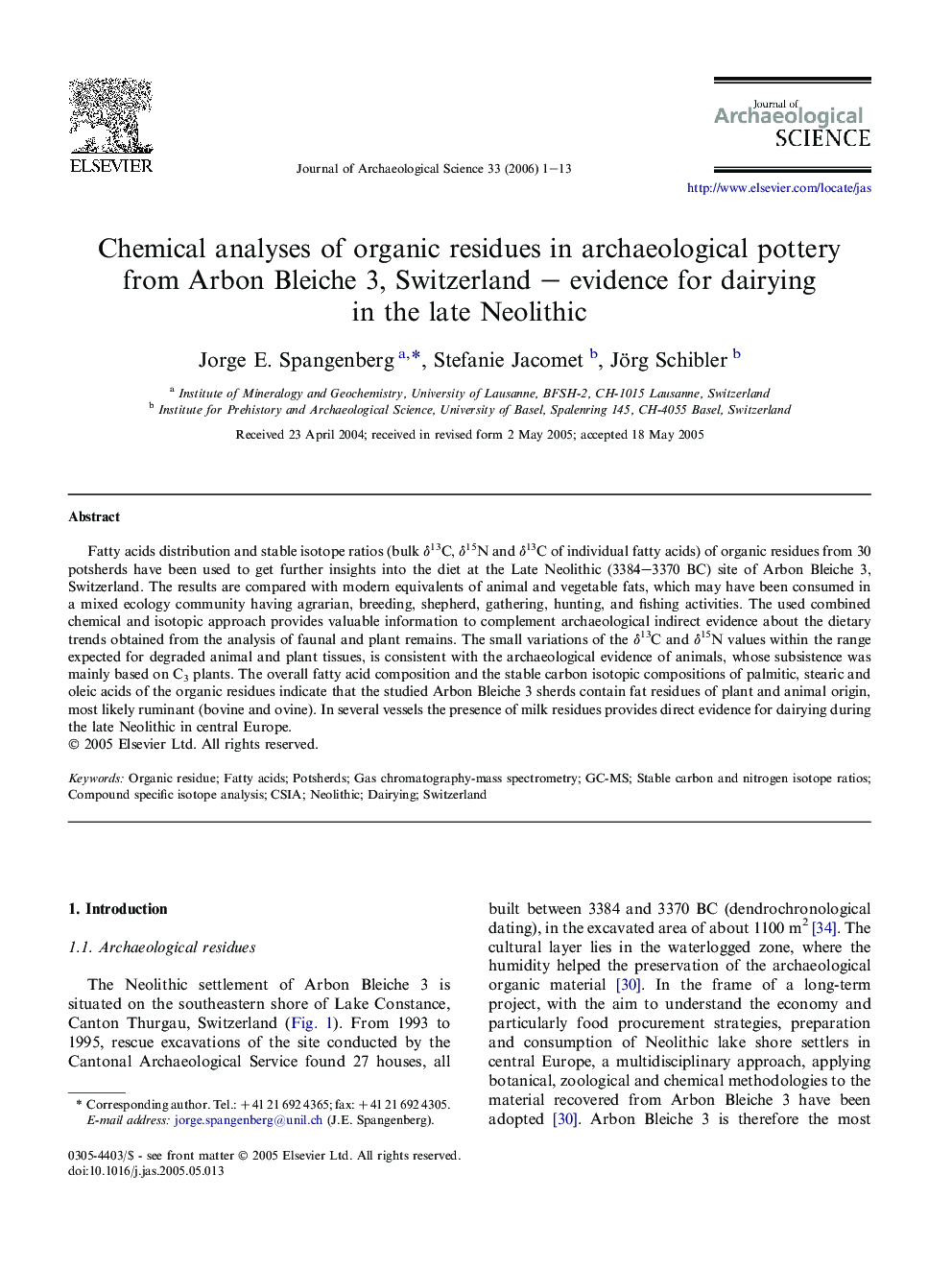| Article ID | Journal | Published Year | Pages | File Type |
|---|---|---|---|---|
| 1037720 | Journal of Archaeological Science | 2006 | 13 Pages |
Fatty acids distribution and stable isotope ratios (bulk δ13C, δ15N and δ13C of individual fatty acids) of organic residues from 30 potsherds have been used to get further insights into the diet at the Late Neolithic (3384–3370 BC) site of Arbon Bleiche 3, Switzerland. The results are compared with modern equivalents of animal and vegetable fats, which may have been consumed in a mixed ecology community having agrarian, breeding, shepherd, gathering, hunting, and fishing activities. The used combined chemical and isotopic approach provides valuable information to complement archaeological indirect evidence about the dietary trends obtained from the analysis of faunal and plant remains. The small variations of the δ13C and δ15N values within the range expected for degraded animal and plant tissues, is consistent with the archaeological evidence of animals, whose subsistence was mainly based on C3 plants. The overall fatty acid composition and the stable carbon isotopic compositions of palmitic, stearic and oleic acids of the organic residues indicate that the studied Arbon Bleiche 3 sherds contain fat residues of plant and animal origin, most likely ruminant (bovine and ovine). In several vessels the presence of milk residues provides direct evidence for dairying during the late Neolithic in central Europe.
